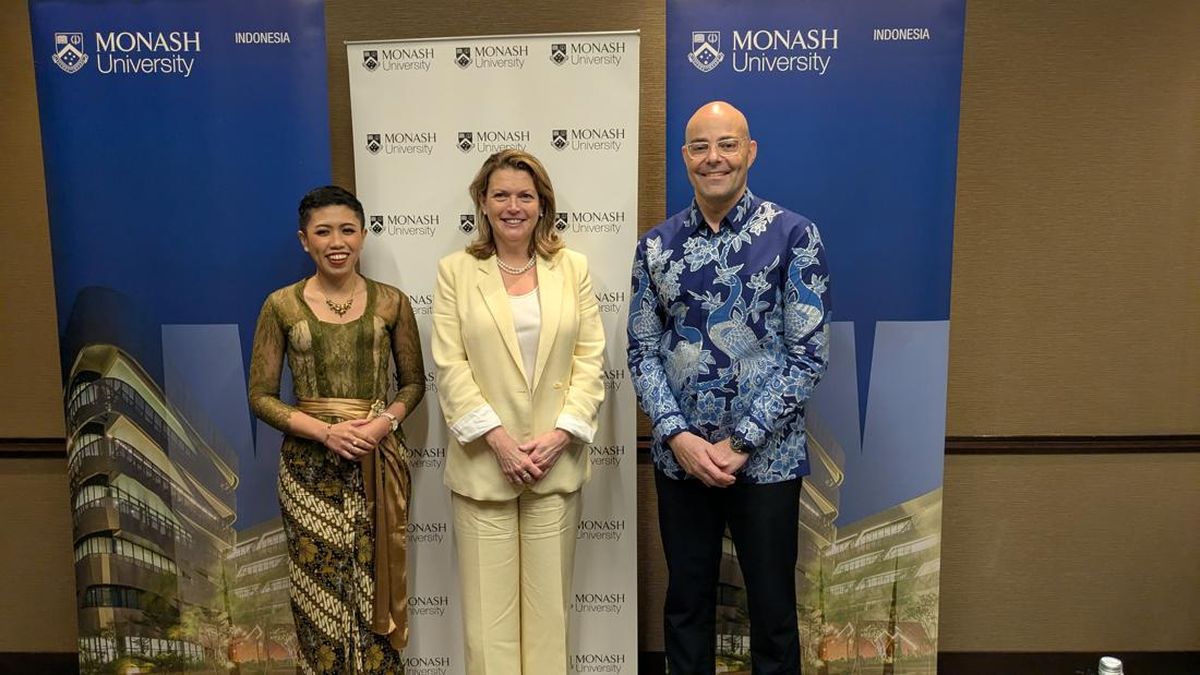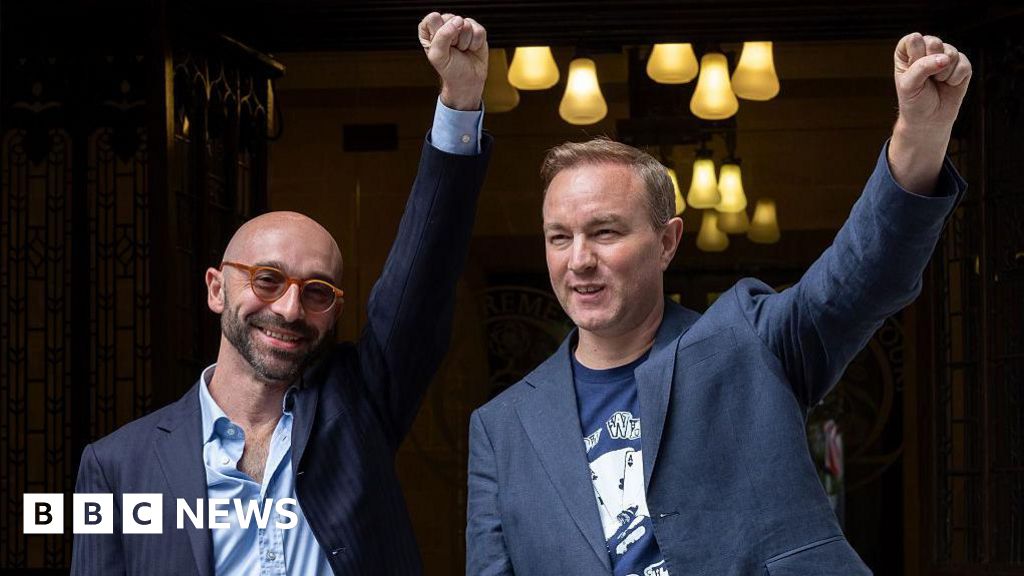Publishing has always had a taste for fakes and frauds, from forged diaries and fabricated memoirs to authors who invent entire identities to enhance the persuasiveness of their supposedly true story. Humans are the most deceptive species, and we are also the most gullible. We tend to trust what the people we believe in say about themselves until proven otherwise.
In the past few weeks, millions of readers and filmgoers who were seduced by Raynor Winn’s hope-affirming, life-changing journey along The Salt Path have been left wondering if they too have been led up the garden path.
Set largely on the picturesque Cornish coastline, The Salt Path is the bestselling, award-winning memoir of an ordinary English couple – Raynor and Moth (the latter a contraction of Timothy) – who find redemption after financial ruin and homelessness and bear witness to the miraculous recovery from a devastating illness via communion with the natural world.

Gillian Anderson and Jason Isaacs in The Salt Path movie adaptation. Credit: Kevin Baker
Earlier this month, journalist Chloe Hadjimatheou reported in The Observer that crucial autobiographical details in the book were fabricated, throwing doubt on Moth’s medical diagnosis, and on their claim about why they lost their home. Responding in a lengthy statement published on her website, Raynor Winn (revealed to be a nom-de-plume) refuted the allegations and accused the publication of pursuing a “highly misleading narrative”.
Historically, Australia is a major player in literary hoaxes – from Ern Malley to Helen Demidenko and Norma Khouri – each scandal shaking readers’ faith in the memoir as a form and leaving publishers red-faced. We may remember the glory days of Australian literary hoaxes in the 1990s and early 2000s, even if many of the participants – authors, journalists and publishers alike – have moved on. Perhaps some readers likewise have chosen to forget.
Sue Vice, who is professor of English literature at the University of Sheffield in Britain and author of Textual Deceptions: False Memoirs and Literary Hoaxes in the Contemporary Era, says the never-ending stream of contested memoirs tells us as much about ourselves and the culture we live in as it reveals about the mind of the hoaxers.
“The nature and source of the authors’ embellishments casts valuable light on a host of issues, ranging from publishers’ priorities to historical stereotypes and readers’ expectations,” she says. Vice cautions against condemning out-of-hand memoirs shown to be flawed in some way.
“Writing about the past is almost certain to generate what looks like fiction or invention, given memory’s unreliability,” she says. “I feel that what is striking and inspiring people who read memoirs remains in place even if small details turn out to be inaccurate or invented.”

Raynor Winn and her husband, Moth Winn, at a screening of The Salt Path in May. Doubts have been raised about aspects of her memoir.Credit: Getty Images
Australia’s best-known literary hoaxes show exactly what’s at stake when truth and invention collide. Some of Australia’s most respected literary figures no doubt came to regret their initial support of Helen Demidenko and the principle of freedom of literary expression when her 1994 novel The Hand that Signed the Paper was attacked for antisemitism and plagiarism. The book was the most decorated and biggest-selling first novel in Australian publishing history, gaining credibility with readers derived from the author’s supposedly authentic background as the descendant of Ukrainian wartime collaborators with the invading Nazis. It turned out, however, that the author’s real name was Helen Darville, and that her fabricated Ukrainian-Australian identity was a much bolder invention than anything featured in the Miles Franklin award-winning novel.
Loading
Darville’s imposture threatened to bring literary culture into disrepute, though it didn’t stop further hoaxes from occurring.
The last big Australian memoir scandal was Forbidden Love, published by Norma Khouri in 2004. Forbidden Love reportedly sold hundreds of thousands of copies in Australia and elsewhere, purporting to tell the tragic true story of the author’s close friend Dalia, with whom she worked at a unisex hair salon in Amman, Jordan. The book claims that Dalia fell in love with a Christian man and was murdered by members of her Muslim family in a so-called honour killing.
Investigations by Malcolm Knox and Caroline Overington, who at the time were colleagues at the Herald, revealed that Norma wasn’t who she said she was. Dalia may never have been anything other than a figment of the author’s imagination. Norma’s insistence that she was telling the truth inspired filmmaker Anna Broinowski to make Forbidden Lie$, a disarmingly candid feature-length documentary in which Broinowski accompanies Norma to Jordan and tries to establish that the story in the book is true, only to be left wondering if she has also been conned by this plausible yet enigmatic woman.
In a historic parallel with the allegations recently made against Raynor Winn, it was revealed that Norma used a nom de plume and had a somewhat chequered past involving financial irregularities. Forbidden Love was published in the era of the War on Terror, when there was a heightened awareness of the very real and serious issue of honour killings. As with The Salt Path in a different context, Norma did not just capture the imagination of her readers – she touched our hearts.
The dark secret of publishing is that the fakes and frauds we know about are only the ones that have been uncovered and publicised.
According to The Salt Path, Raynor and Moth experienced the ultimate sea change after walking the South West Coast Path, a coastal hike of some 1000 kilometres that includes Cornwall. Readers were told that Moth, who was diagnosed with an incurable brain disease, went into remission after travelling the path. The remarkable recovery by Moth during the long walk is recounted by the narrator with spousal love and low-key lyricism: “Maybe it had been the lasagne, or the red wine, or the massage, or the thought of bacon, but Moth had got out of the tent that morning without any help. He was losing weight fast, his lean frame becoming really lean. Was he moving just a little more easily or was that me hoping for a miracle?”
Winn’s hopes for Moth’s recovery do indeed manifest in the kind of miracle that could seem just about possible in the real world. Few readers would have believed the Winns if, on their travels, they claimed to have encountered the mythical Cornish sea monster known as the Morgawr, but a quiet story about the everyday struggles of ageing does not in itself seem far-fetched. The Salt Path was adapted into a feel-good feature film starring Gillian Anderson and Jason Isaacs, giving the tale an added layer of Hollywood sheen and reaching out to a new audience of people who might not join book clubs but still go to the movies.
Loading
Consolation is a vital part of what we look for in entertainment. The story of the Winns was published as non-fiction, and the book captured the imagination of a legion of readers, many of whom no doubt face similarly harsh challenges in the autumn of life. The Salt Path and its sequels have sold millions in a hit-or-miss industry where most books make no real money for anyone. The dark secret of publishing is that the fakes and frauds we know about are only the ones that have been uncovered and publicised. Such is the commercial nature of publishing that if a book does not exist, then there is an imperative to fill a gap in the market.
Hoax memoirists tend to disappear once they have been rumbled, with the possible exception of James Frey, who famously drew the ire of daytime TV queen Oprah Winfrey in 2003 with A Million Little Pieces, a memoir of redemption by a desperate drug addict and alcoholic who ends up in rehab. Frey is still publishing books, cheerfully holding up both of his middle fingers to the camera in author photos. As Frey told the Herald’s Thomas Mitchell earlier this month, all he claims to have done was lightly fictionalise a factual story. Frey says he is proud of his literary notoriety: “Say what you want about A Million Little Pieces, it’s still read, it’s still purchased, and it’s still an iconic part of culture”.
British author and educator Midge Gillies says the push to publish and profit can be challenging to resist. “For any memoirist, creating a story arc of redemption can seem very tempting as it’s clearly what publishers have wanted, and the formula has proved commercially – as well as artistically – successful in books such as H Is for Hawk by Helen Macdonald and Raising Hare by Chloe Dalton,” she says.
In addition to publishing writing guides and works of biography (including a forthcoming group portrait of pioneering trans-Atlantic aviatrixes), Gillies teaches memoir in creative writing courses conducted for Granta and the University of Cambridge. She says that redemption and recovery stories are not uncommon: “Many of my students frame their accounts as ‘wellness memoirs’ and go to great lengths to be truthful about their illness and the extent to which they may have been cured.”

Oprah Winfrey interviews James Frey.Credit: AP
Gillies says she has not encountered a student like Helen Demidenko, Norma Khouri or Raynor Winn: “In the 25 years I’ve been teaching memoir I’ve never once come across a student who, to the best of my knowledge, lied about their true story – or tried to inflate it in any way. The best true stories are so compelling that you don’t have to make anything up.”
Loading
Gillies says students in her courses spend a considerable amount of time discussing the relationship of trust between writer and reader: “Memoir is all about trust. Winn’s claims that her husband’s rare and debilitating illness had been substantially eased by their experience of walking England’s South West Coast Path has left many writers feeling queasy. If The Observer allegations are correct, Raynor Winn seems to have skipped her class on ethics.”
Simon Caterson is author of Hoax Nation: Australian Fakes and Frauds, from Plato to Norma Khouri.

















































